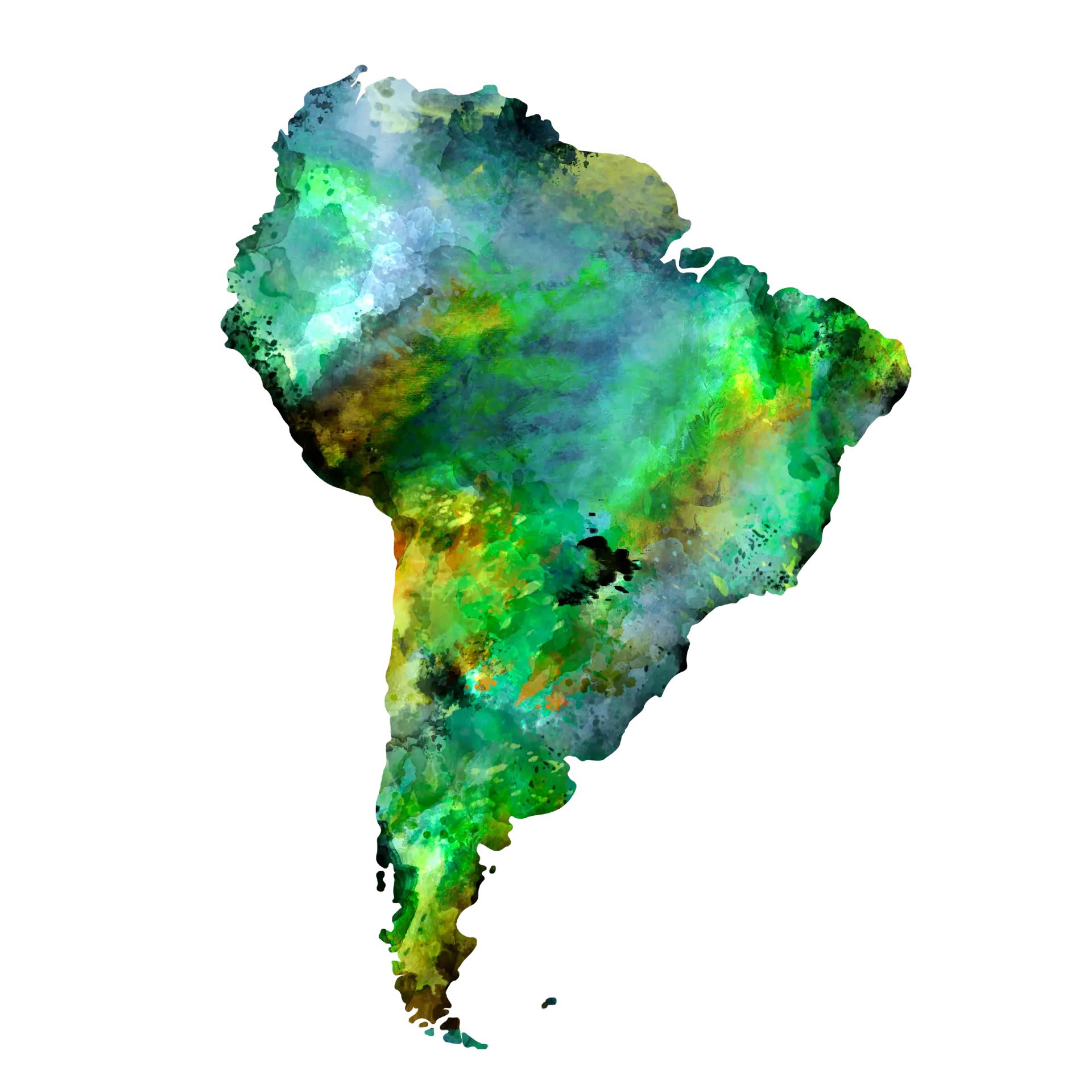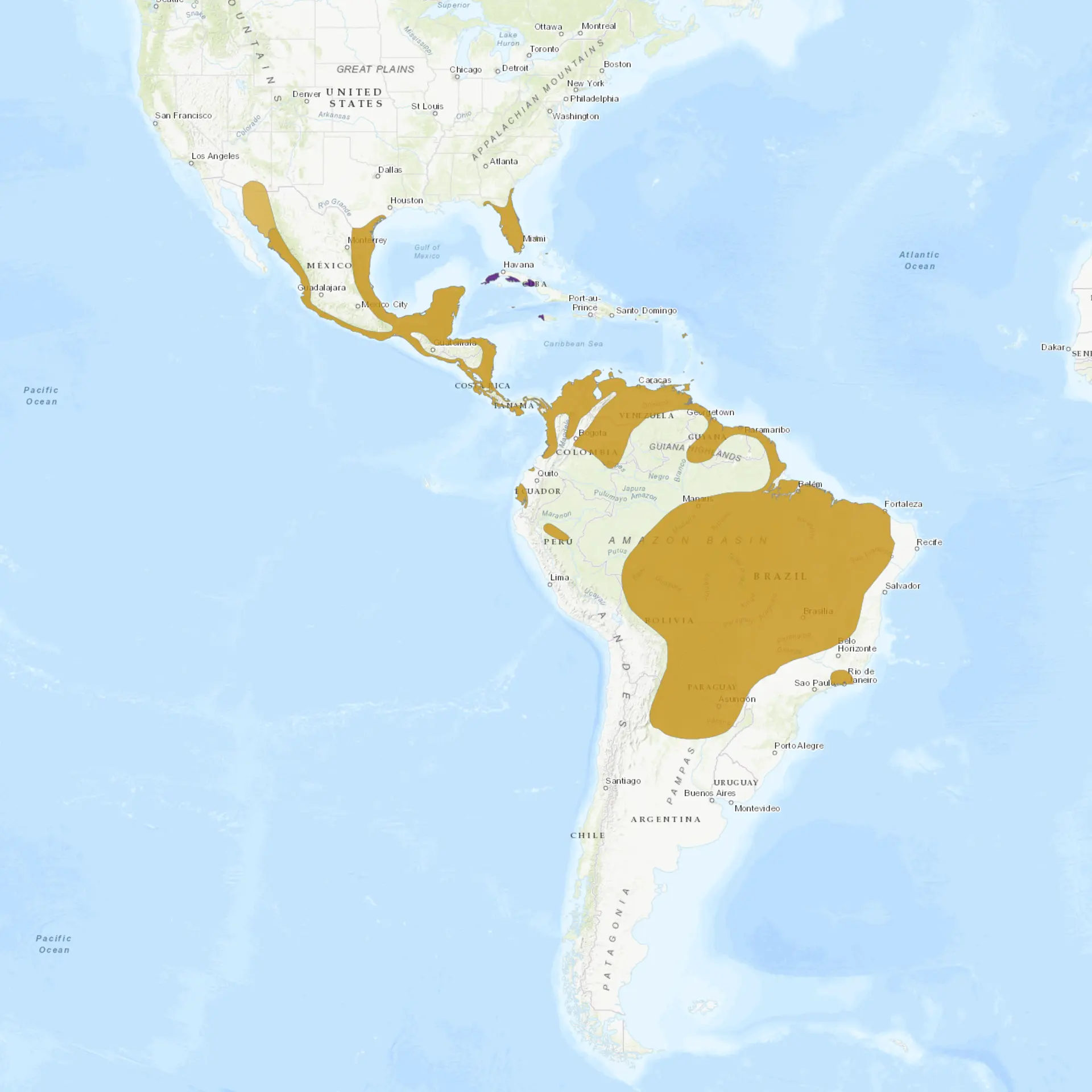Overview
The Black-bellied Whistling-duck is a striking and social waterfowl species native to the Americas, known for its unique appearance and high-pitched whistling calls. It gets its name from its dark black belly, which contrasts sharply with its chestnut body and pink legs. These ducks are highly social and often seen in large flocks, roosting trees or feeding in wetlands and agricultural fields. Unlike most ducks, black-bellied whistling ducks have a more upright stance and share characteristics with perching birds, such as strong legs and the ability to roost in trees.
This species is primarily nocturnal or crepuscular and is most active during dawn, dusk, and nighttime. It feeds on seeds, grains, and aquatic vegetation, often venturing into fields and wetlands to forage. Black-bellied whistling ducks are cavity nesters, often using tree holes, nest boxes, or even abandoned nests of other birds to lay eggs. Their adaptability to natural and human-modified environments has allowed them to expand their range, but habitat destruction and agricultural practices still pose localized threats.
Known for their strong family bonds, black-bellied whistling ducks often form small groups of parents and ducklings that stay together for weeks after hatching. They are admired for their vibrant plumage, unusual whistling calls, and gregarious nature. As one of the more distinctive duck species, black-bellied whistling ducks are commonly observed in parks, wetlands, and reserves across their range, making them a favorite among birdwatchers and conservationists.
Taxonomy
Kingdom
Phylum
Class
Order
Family
Genus
Species
Type
Current distribution:
The black-bellied whistling-duck is native to the Americas, with a range extending from the southern United States to Argentina. In the United States, they are most common in Texas, Louisiana, and Florida, but their range has expanded northward in recent decades. Populations are also found throughout Mexico, Central America, and much of South America, particularly in Colombia, Venezuela, Brazil, and Argentina.
This species is non-migratory in tropical regions but exhibits local movements based on water availability, particularly in arid areas. In the United States, some populations migrate short distances to avoid colder weather. Black-bellied whistling-ducks are increasingly found in urban and suburban areas, taking advantage of artificial water sources and nesting opportunities. Their adaptability has helped them thrive in natural and human-modified landscapes, but habitat loss and hunting still pose localized threats.
Physical Description:
The black-bellied whistling-duck is a medium-sized waterfowl with a distinctive chestnut body, black belly, and gray face. Its pinkish-red bill and bright pink legs stand out, contrasting sharply with the darker tones of its plumage. The long wings feature a striking white patch visible during flight, adding to their distinctive appearance. Adults have large, dark eyes and an upright posture, giving them a unique silhouette compared to other ducks.
Both males and females look alike, with no significant sexual dimorphism in plumage or size. Juveniles, however, are duller in coloration, with a lighter brown body and less vibrant legs and bills. The species has a relatively long neck and a short, square tail. Its length ranges from 19–22 inches (48–56 cm), making it slightly larger than many other duck species.

Lifespan: Wild: ~8 Years || Captivity: ~15 Years

Weight: Male & Female: 1.5–2.2 lbs (0.7–1 kg)

Length: Male & Female: 19–22 in (48–56 cm)

Wingspan: Male & Female: 30–37 in (76–94 cm)

Top Speed: 40 mph (64 km/h)
Characteristic:
Native Habitat:
Black-bellied whistling-ducks are found in many habitats, including wetlands, marshes, rivers, ponds, and agricultural fields. They prefer shallow water and abundant vegetation, which provide food and cover for nesting and foraging. Unlike many duck species, they often roost in trees near water, using their strong legs and perching ability. Wetlands with nearby forested areas or open fields are favorable for their lifestyle.
This highly adaptable species thrives in human-altered environments, such as reservoirs, rice paddies, and urban parks with water features. During the breeding season, ducks require access to tree cavities or nest boxes, although they can also nest on the ground in dense vegetation. Water availability often influences Seasonal movements between habitats, with ducks concentrating in wetter areas during the dry season. Their ability to exploit a variety of habitats has allowed them to expand their range, particularly in the southern United States.
Biomes:
Biogeographical Realms:
Continents:
Countries:
Diet:
Diet & Feeding Habits:
Black-bellied whistling-ducks are omnivorous, but their diet is predominantly plant-based, consisting primarily of seeds, grains, and aquatic vegetation. They forage in shallow wetlands, agricultural fields, and along the edges of lakes and ponds, often dabbling or grazing on vegetation. Their strong legs and upright posture allow them to forage on land effectively, often seen feeding in rice or cornfields. During the wet season, they consume more aquatic vegetation, including water plants and grass seeds.
In addition to plant material, black-bellied whistling-ducks occasionally consume small invertebrates, such as insects, crustaceans, and snails, especially during the breeding season when extra protein is needed. They primarily forage at night or during dawn and dusk, avoiding the day’s heat. Their ability to exploit crops has helped them thrive in human-modified environments, though this sometimes causes them to conflict with farmers. In captivity, they are often fed grains, leafy greens, and commercial waterfowl pellets to replicate their natural diet.
Mating Behavior:
Mating Description:
Black-bellied whistling-ducks are monogamous and form strong pair bonds that often last for life. Courtship involves mutual displays of calling and preening, synchronized foraging and flying. The breeding season varies depending on the region but generally coincides with the rainy season when food and water are abundant. Pairs select nesting sites in tree cavities, nest boxes, or dense vegetation near water, and the female lays a clutch of 9–18 eggs.
Both parents share incubation duties, lasting approximately 25–30 days. After hatching, the ducklings are precocial and leave the nest shortly after birth, following their parents to water. Both parents protect and guide the young, who forage independently but rely on the adults for protection from predators. The ducklings fledge at about 8 weeks old but may remain with their parents for several months before becoming independent.
Reproduction Season:
Birth Type:
Pregnancy Duration:
Female Name:
Male Name:
Baby Name:
Social Structure Description:
Black-bellied whistling-ducks are highly social birds, often seen in flocks that can number hundreds or even thousands. Outside of the breeding season, they form large roosting groups in trees or along wetlands, providing safety in numbers from predators. Strong bonds are maintained in breeding pairs through mutual displays, vocalizations, and shared parenting responsibilities. Groups of parents and their ducklings often form cohesive units, traveling and foraging together.
Communication is a key aspect of their social structure, and their high-pitched whistling calls maintain contact between individuals and signal danger. Flocks are often seen moving together in a coordinated manner during foraging, enhancing their efficiency in finding food. Despite their social nature, competition for nesting sites or food can lead to minor group conflicts, though these interactions are usually non-aggressive. Their gregarious behavior and vocalizations make them a prominent presence in their habitats.
Groups:
Conservation Status:
Population Trend:
The black-bellied whistling-duck is a species of least concern, with stable or increasing populations across much of its range. Its adaptability to various habitats, including human-modified environments, has allowed it to thrive despite localized threats such as habitat loss and hunting. Populations in the southern United States have expanded northward, likely due to warming climates and the availability of agricultural fields and urban water sources.
The species is widespread and abundant in tropical regions, particularly in wetlands and agricultural landscapes. However, localized declines may occur where wetlands are drained or converted for agriculture. Hunting and egg collection pose additional threats in some parts of their range, though these impacts are not currently significant at the population level. Conservation efforts focus on protecting wetlands and educating farmers to reduce conflicts over crop damage.
Population Threats:
Habitat destruction is the primary threat to black-bellied whistling-ducks, as wetlands are drained or converted for agriculture, urban development, and infrastructure projects. In agricultural areas, they are sometimes considered pests due to their feeding on crops like rice and corn, leading to conflicts with farmers. Hunting pressure in some regions, especially Central and South America, can also impact local populations, though the species is generally resilient due to its high reproductive rate.
Climate change poses an additional long-term threat, as altered rainfall patterns may reduce the availability of suitable wetlands. Deforestation or urbanization can also limit breeding success in some areas by causing the loss of tree cavities for nesting. Despite these challenges, the black-bellied whistling-duck remains widespread and adaptable, making it less vulnerable than many other waterfowl species. Conservation efforts focus on mitigating habitat loss and promoting coexistence with human activities.
Conservation Efforts:
Conservation efforts for black-bellied whistling-ducks include wetland protection and habitat restoration to ensure the availability of nesting and foraging sites. Artificial nest boxes are widely used to provide additional nesting opportunities in areas with scarce natural tree cavities. In agricultural regions, programs aim to reduce conflicts by encouraging sustainable farming practices and compensating farmers for crop damage caused by waterfowl.
Hunting regulations are in place in many regions to prevent overharvesting, particularly in the United States, where the species is a popular game bird. Public education campaigns promote awareness of the duck’s ecological importance and encourage birdwatching as an alternative to hunting. Monitoring programs track population trends and assess the impacts of habitat changes and climate variability. International cooperation between countries in the Americas is essential for ensuring the long-term conservation of this migratory and widespread species.
Additional Resources:
Fun Facts
- Black-bellied whistling-ducks are one of the few duck species that perch and roost in trees.
- They are called “whistling-ducks” due to their distinctive, high-pitched whistling calls.
- Both parents share incubation duties, which is uncommon among waterfowl.
- Ducklings are precocial, meaning they can walk, swim, and forage shortly after hatching.
- They often forage in agricultural fields, feeding on grains like rice and corn.
- Their bright pink legs and bills make them one of the most colorful duck species.
- They are known for their upright stance, which resembles perching birds rather than typical ducks.
- Black-bellied whistling-ducks are excellent fliers and can travel long distances between feeding and roosting sites.
- Unlike many duck species, they do not migrate long distances and are mostly sedentary or locally nomadic.
- They are sometimes called “tree ducks” due to their unique ability to perch in trees.

















































































